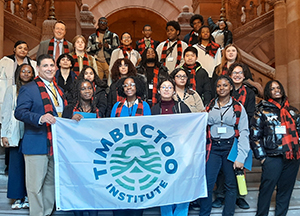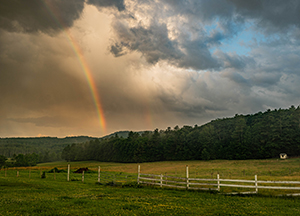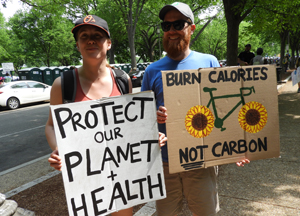
Clean Air Interstate Rule Position
Position of the Adirondack Council the Clean Air Interstate Rule Formerly the Proposed Interstate Air Quality Rule
(USEPA -- Federal Register-- January 30, 2004)
Click to see the Council's Summary of the Regulation
Using strong advocacy based on sound science, the Adirondack Council has worked diligently with the scientific community, the media and fellow environmentalists to save the Adirondack Park from its greatest threat-- destruction from acid rain.
For more than a decade, the Adirondack Council has sought to convince state and national regulators and legislators of the need for significant new reductions in the emissions of sulfur dioxide and nitrogen oxide, two pre-cursors to acid deposition, from the nation's power plants.
We have walked the halls of state legislatures and our nation's Capitol. We have sponsored conferences and produced educational materials. We have even gone to federal court in pursuit of this important goal-- a mission shared by thousands of our loyal members.
The United States Environmental Protection Agency's (USEPA) new Clean Air Interstate Rule (CAIR) that was finalized on March 10, 2005, requires power plants in the Eastern United States to significantly cut their emissions of sulfur dioxide (SO2) and nitrogen oxide (NOx). The time frame and the deep level of cuts proposed will be enough to end acid rain damage in the Adirondacks.
Although the Council is disappointed to see that Congress seems incapable of finding common ground to pass legislation on air quality in this session, we are extremely pleased that USEPA finalized CAIR and strongly support it.
The regional reductions in emissions in CAIR exceed the cuts first proposed in legislation introduced by the late Senator Daniel Patrick Moynihan. The Moynihan legislation was drafted to implement the recommendations of three reports on acid rain received by Congress from federal agencies since the initial acid rain program was adopted by Congress in 1990. All three reports and many others outside of government found that while the acid rain program was meeting its goals, the target levels of emissions were too high to effectively stop the damage done in the Adirondacks from acid rain. The reports uniformly recommended building on the now established national cap and trade program for sulfur emissions. They recommended requiring new reductions in sulfur phased in over time, and the creation of a similar emission control program for nitrogen emissions-- in the process, cutting national sulfur emissions by at least another 50% and nitrogen pollution by more than 60%.
With CAIR, there will be a regional cap and trade program for 29 states east of the Mississippi River and the District of Columbia that would meet and exceed those goals. In ten years, the Clean Air Interstate Rule will cut sulfur emissions by another 70% and nitrogen emissions by 65%.
In January of 2004, The Research Council of the National Academy of Sciences recommended in a Report to Congress, that EPA should look to address the regional transport of pollution by regulating multiple pollutants from similar sources using, whenever feasible, a market-based cap and trade approach. In December of 2002, Environmental Defense, a national environmental advocacy organization, issued a report recommending that the USEPA adopt a cap and trade program for year-round reductions of nitrogen in the eastern United States, with additional cuts in the existing sulfur program.
The new USEPA rule exceeds the emission reduction targets adopted in the acid rain platform of the Association of New England Governors and Eastern Canadian Premiers, adopted in 1999. The new rule is also consistent with the recommendations of the Southern Appalachian Mountains Initiative (SAMI) which represented stakeholders from a number of mid-Atlantic and southern states. SAMI issued a report in August of 2002, which called for the establishment of a new cap and trade program for power plant emissions of sulfur and nitrogen at least as stringent as that now proposed by USEPA.
The existing market-based cap and trade acid rain program has proven itself to be highly economical with an almost perfect record of industry compliance. A similar 22 state cap and trade program to reduce ozone in the east coast by capping nitrogen emissions from power plants in the summer months goes into effect in May of 2004. The USEPA intends to merge the two programs into a year-round program.




